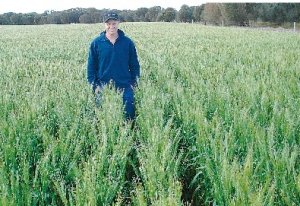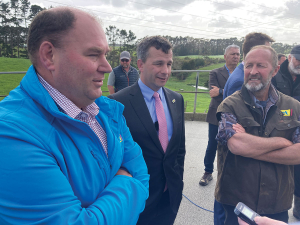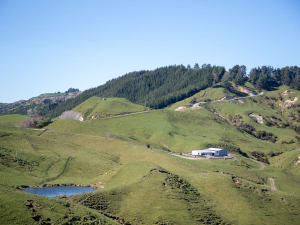This continuous trial near Ashburton began in 2003 to compare six different ways of growing arable crops in Canterbury using common rotations. The most recent five years of results were summarised by FAR's Nick Poole. The full report is available from FAR, but since this article is about no-tillage, it is appropriate to draw attention to the two no-tilled, or as FAR puts it, "direct drilled" treatments at Chertsey since they represent two contrasting ways (drills) of undertaking no-tillage.
Regardless of drill design, no-tillage, in general, is known to have a positive effect on soil health and the most recent five years of the Chertsey trial confirm this. Earlier work by Landcare Research showed the soil health of a Manawatu silt loam double-cropped for 20 years using the no-tillage treatment that's performed best at Chertsey, and without any pasture phase, was very similar to the same soil under a 20-year un-cropped pasture field alongside.
By contrast, a similar soil in the district that had been continuously cropped by cultivation for the past 20 years had deteriorated markedly.
People who have already made the change to full-time no-tillage soon find they can employ different rotations and sowing dates than they might otherwise have chosen under a full tillage regime. The main difference is that under no-tillage it is no longer necessary to periodically include a pasture and/or animal phase in the rotation in order to restore soil structure.
But in the Chertsey trial, an understandable decision was made to apply a common local rotation to all treatments and this included pastures and/or grazing animal phases. So it could be argued that the no-tillage results from Chertsey are, if anything, conservative.
Interestingly, extensive former research has also shown the two no-tillage treatments used at Chertsey represent (on the one hand) the "best" (and on the other hand) one of the "worst" of all no-tillage options available. It is perhaps not surprising therefore that the "best" no-tillage treatment at Chertsey gave the highest average yield of all treatments and the "worst" no-tillage treatment was close to producing the lowest yield of all treatments. There was, in fact, a 22% difference in yield between the two no-tillage treatments and a 30% difference between the "best" no-tillage treatment and the "worst' of all treatments, which was "plough and press". It's a clear illustration that not only are crop-establishment practices not equal, but no-tillage drills are not equal either.
FAR had earlier grown a 16.8t/ha wheat crop at Geraldine using the same "best" no-tillage treatment as at Chertsey. Since the highest yielding wheat crop in the Guinness Book of Records (also grown in New Zealand) was at that time a little over 15 t/ha, the 16.8 t/ha FAR no-tilled crop may well have been the highest wheat yield ever grown anywhere although it will never make the Guinness Book of Records because it was not grown as a commercial crop.
In the 1990s, seven years of trials at Washington State University, USA, showed that the same "best" New Zealand no-tillage treatment that was used at Chertsey had out-yielded the "best" no-tillage treatment then available in the USA by an average of 13% – a result similar to the Chertsey result some 20 years later.
Paddock trials in Marlborough in 2004 (involving 11 different fields) produced an average 51% difference in the yields of brassica forage crops sown with the same "best" and "worst" no-tillage drills used at Chertsey. Another long-term trial in Australia had earlier recorded 12 years of higher soybean yields (by an average of 30%) using the same "best" no-tillage treatment compared with conventional tillage in coastal NSW.
So, when people ask if no-tillage drill design can affect crop yield, even the most conservative answer would have to be 'yes'. The reasons why have been extensively documented. More of a mystery is why every New Zealand farmer has not already made the change to superior no-tillage practices developed right here.

















